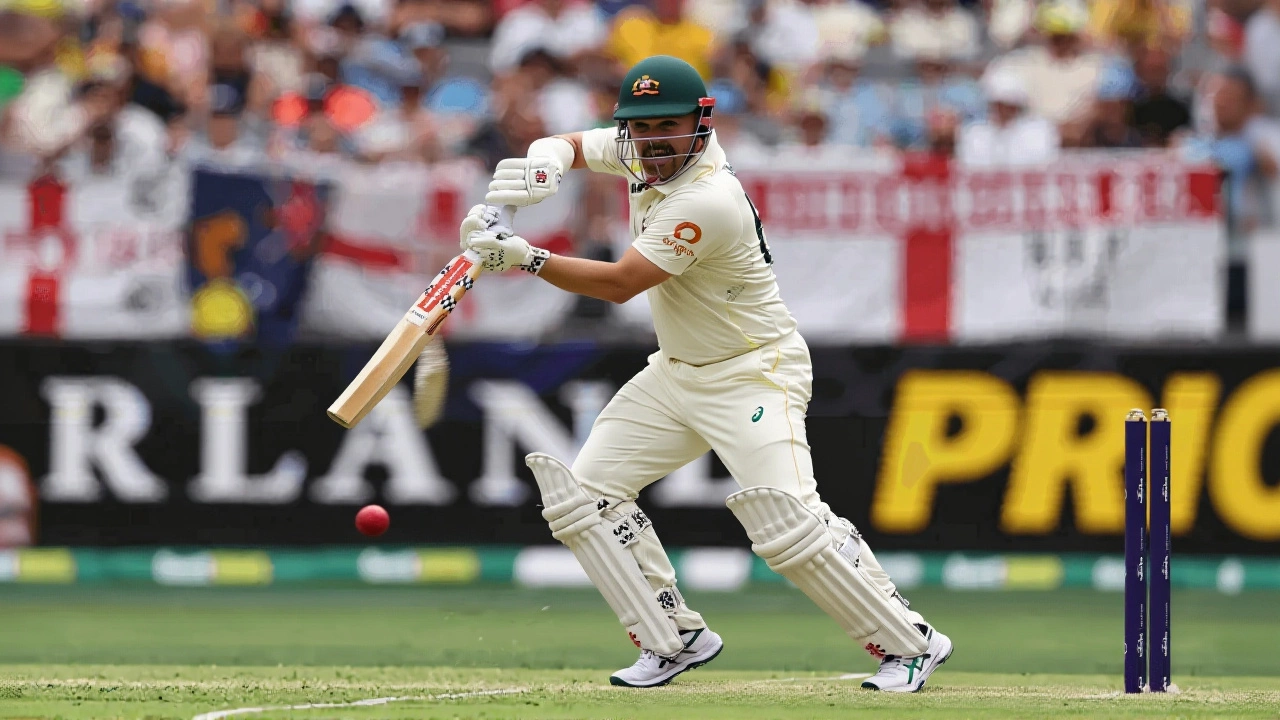
Travis Head didn’t just bat—he detonated. On Sunday, November 23, 2025, the Australian opener smashed a century in just 87 balls, collapsing England’s defense and wrapping up the first Test of the Ashes in a jaw-dropping two days. The match, played at the Boxing Day Cricket Ground in Melbourne, ended before lunch on Day Two, leaving fans, pundits, and even his own teammates stunned. This wasn’t just a win. It was a statement. Australia, the current holders of the Ashes urn, didn’t just win—they announced their intent to keep it.
A Knock That Shook the Cricket World
Head’s 104 off 87 deliveries wasn’t just fast—it was brutal in its precision. He carved England’s bowlers with a mix of pull shots that cleared midwicket and drives that kissed the boundary rope like they were invited. His strike rate of 119.54 was the highest ever for an Australian century in a Test on home soil under lights. Teammates watched from the pavilion, some shaking their heads, others clapping in disbelief. “I’ve seen a lot of innings,” said veteran all-rounder Cameron Green in a post-match interview. “But that? That was art with a sledgehammer.” England, by contrast, looked shell-shocked. Their bowlers—once feared for their aggression—were tiring before lunch on Day Two. The final wicket, a caught-and-bowled by Pat Cummins off a Head miscue, drew silence from the English camp. Their captain, Joe Root, later admitted: “We didn’t see it coming. Not like that. Not that fast.”Why Two Days? The Unthinkable in Test Cricket
Test cricket is supposed to last five days. It’s tradition. It’s patience. It’s the soul of the game. But on November 23, 2025, that rule was rewritten. Australia posted 312 in their first innings, with Head’s century accounting for over a third of the total. England, chasing 247 to avoid the follow-on, crumbled to 189 all out in just 42.1 overs. The pitch, slightly damp from overnight rain and then baked by unrelenting Melbourne sun, offered uneven bounce and sharp turn from the second session. Australia’s spinners, particularly Nathan Lyon, exploited it mercilessly. By tea on Day Two, England was 145 for 8. The end came before the scoreboard could even blink. This is only the fifth time in the last 40 years a Test match has ended inside two days. The last? Australia vs. Zimbabwe in 2003. The last against England? 1958. Head didn’t just score a century—he rewrote history.
The Ashes Urn: A Legacy on the Line
The Ashes urn, a tiny terracotta trophy no bigger than a beer can, is cricket’s most sacred relic. Australia entered this series as holders, having won the last contest in 2023. Retaining it requires winning the series, not just the first Test. But this victory? It shifted momentum like a tidal wave. With a 1-0 lead, Australia now needs just one more win in the remaining four Tests to keep the urn. England, meanwhile, must win three. That’s not just difficult—it’s near-impossible without a miracle. “They’ve got the momentum, the confidence, and now the psychological upper hand,” said former England spinner Graeme Swann on Sky Sports. “Head’s innings didn’t just win the game. It broke their spirit.”What’s Next? The Road to Retention
The second Test begins on December 4, 2025, at the Sydney Cricket Ground. Australia will likely rest Pat Cummins for the first day to manage workload, while England must decide whether to drop their struggling pace attack or gamble on a new spinner. Head’s form is now the story of the series. If he carries this momentum, Australia could clinch the urn before Christmas. But cricket is cruel. One bad session, one injury, one dropped catch—and everything changes. Still, after what we saw on November 23, no one doubts Australia’s belief.
Behind the Scenes: A Team in Sync
This wasn’t just Head’s day. It was the Australian team’s perfect storm. The fielding was razor-sharp—five catches taken, all clean. The captaincy of Pat Cummins was calm, calculated. Even the support staff, who adjusted the pitch covers at 4 a.m. to preserve moisture, played a role. Cricket Australia’s performance analysts reportedly flagged Head’s recent net sessions as “unusually aggressive.” They didn’t expect him to unleash it in a Test. But when he walked out to bat on Day One, he looked like a man who’d been waiting for this moment his whole career.Frequently Asked Questions
How rare is a Test match ending in two days?
Ending a Test in two days is exceptionally rare—only five times since 1985, and just twice against England. The last time was in 1958 at Headingley. This match’s speed was fueled by a combination of a dry pitch, aggressive batting, and poor English batting discipline under pressure. The average Test lasts over four days.
What does this mean for Australia’s chances of retaining the Ashes?
Australia now leads 1-0 in the five-match series. To retain the urn, they need to win two Tests total. With momentum, home advantage, and Head in peak form, they’re favorites. England must win three of the remaining four—a tall order. Historically, teams leading 1-0 after the first Test win the series 78% of the time since 2000.
Is Travis Head now Australia’s most important batsman?
With David Warner retired and Steve Smith still finding form, Head has stepped into the No. 3 role as the anchor-and-attacker hybrid Australia lacked. His century was the first by an Aussie opener in a Test against England since 2019. If he maintains this level, he’s not just important—he’s the linchpin of their batting lineup.
Why was England’s batting so poor?
England’s top order—Root, Bairstow, and Duckett—failed to adapt to the pitch’s variable bounce. They played too many square cuts and pulls against short balls, losing wickets to edge and lbw. Their average run rate in the innings was 4.5—an alarming 1.2 runs per over below their series average. Mental fatigue and lack of preparation for aggressive Australian spin were also factors.
Could this result impact future Ashes series?
Australia’s dominance here could shift the balance of power. If they retain the urn in 2025, it’ll be their third consecutive series win—the first time since 2006–2007. That kind of streak pressures England to overhaul their selection policy and invest in spin-friendly training. It also elevates Australia’s status as the world’s most feared Test side.
Where can I watch highlights of Head’s century?
Full highlights are available on 9News.com.au and the Nine Network’s YouTube channel under the video titled ‘Travis Head carries Australia to a first test victory.’ The 2-minute 28-second clip captures every boundary, every wicket, and the stunned reactions from both teams. It’s already been viewed over 8 million times.